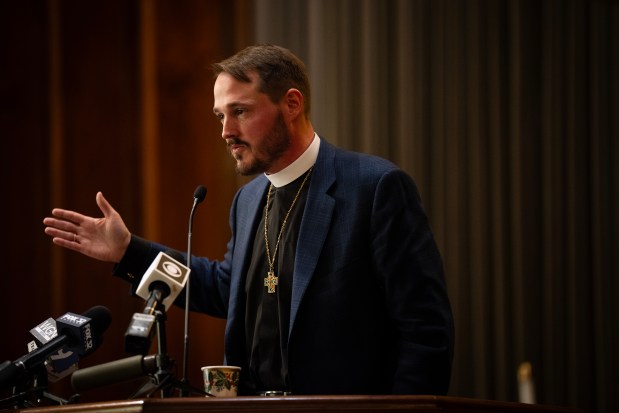Valparaiso City Council President Robert Cotton and council constituents devoted more than 90 minutes of further point and counterpoint dialogue with one another and Valparaiso Mayor Jon Costas about the passing of “amended text” unified development ordinances during a four-and-a-half-hour City Council meeting.
Cotton, with support from Councilwoman Barbara Domer, D-3, and Councilwoman Ellen Kapitan, D-At-large, remained united during the Aug. 12 meeting that, according to Cotton, “blended ordinances approval could result in restrictive discussion and confused contemplation.”
Debate about the issue started over an ordinance presented by Valparaiso City Planner Beth Shrader at the July 22 meeting. The ordinance, which included a public hearing, addressed changed text related to two different city matters: stormwater drainage and a future modification of zoning for the fraternities at Valparaiso University.
“The unified development ordinance is a local document we use for our sets of standards and regulations,” Shrader said during the meeting.
“This proposed ordinance is about the topics of stormwaters, best locations for fraternities and sororities at VU, and non-conforming uses for lots.”
Cotton continued to emphasize his stance that each of the revisions should be considered as separate motions, rather than “lumped together for approval” based on “different characteristics.”
Councilwoman Diana Reed, D-1st, said she called a neighborhood meeting to help gather information and field questions.
“This area around the campus is my district and I’ve lived there for more than 35 years, including living next to a fraternity,” Reed said.
“We’ve seen more addresses transition to rentals when they are located around fraternities in these residential areas. I want to say there are not developers trying to come in and buy up these properties nor are we pushing any of the current fraternities out of their existing locations.”
Councilwoman Barbara Domer, D-3, agreed with Cotton, D-2, and continued to back the motion to separate each of the amended topics by subject.
“Everyone keeps talking about the voluminous 500 pages of further other changes that need to be reviewed, but we need to understand the difference between what’s considered cumbersome and what is or is not being efficient,” Domer said.
Mayor Costas echoed his sentiment as at last month’s meeting, repeating his observation: “There are 34,000 residents who are not here tonight with concerns about the passing of this ordinance.”
Costas asked Kapitan why she felt the topics need to be addressed and voted on separately.
“Even just for the ease of being able to look up these topics two years from now,” compared to having multiple topics addressed under the same ordinance, Kapitan said.
A motion to separate the blended topics into individual ordinances did not pass after a vote of 7 to 3, with Cotton, Domer and Kapitan voting in favor of it.
The ordinance subsequently passed with the multiple topics addressed together, by a vote of 5 to 2, with Cotton and Domer as the two votes against it.
Philip Potempa is a freelance reporter for the Post-Tribune.



